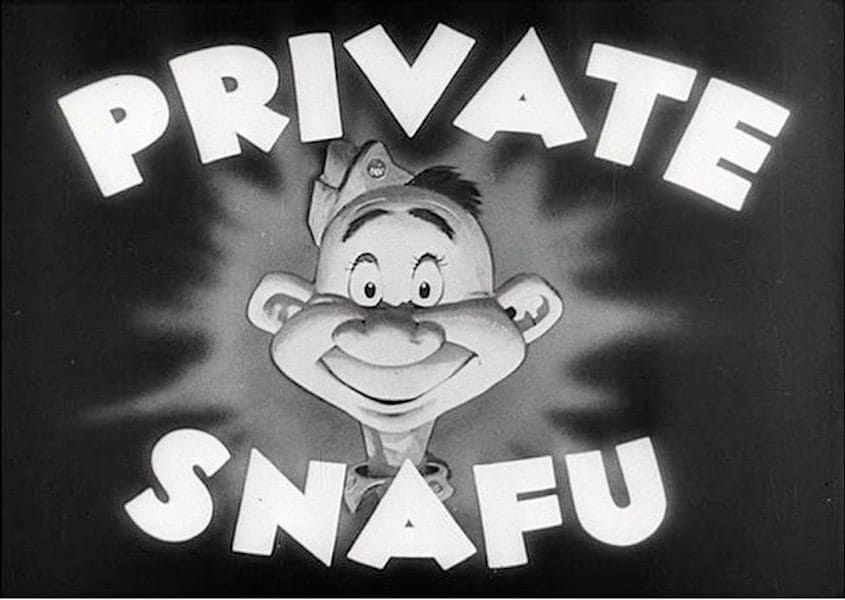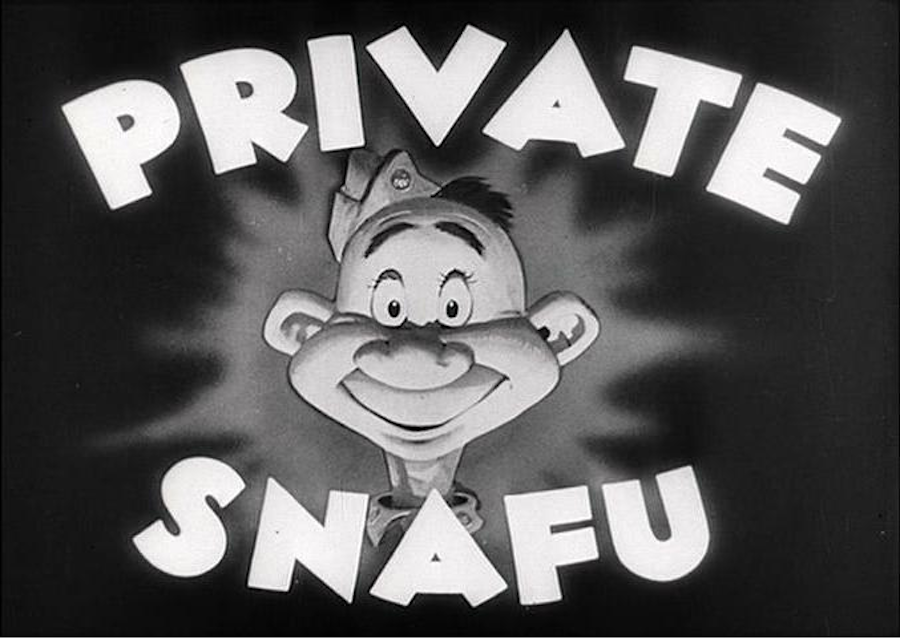The Strange Tale of Private Snafu
Created to laugh away chaos and prevent mistakes, he might hold lessons for today

For nearly 75 years, we’ve gone without a global-scale eruption of violence, disease, or natural disaster. Violence has been fading worldwide for decades, disease has been kept at bay until a few months ago, and natural disasters have remained localized.
As a result, we’re not accustomed to an upsetting and unpredictable world.
Covid-19 and the economic chaos it has introduced have made life feel unfamiliar, rudderless, and dislocated from the past. How do we comprehend the sheer madness of what’s happening and what may be to come? How do we internalize that this “new (ab)normal”?
In this context, the word “snafu” came to mind recently. I decided to look up its origin, and found a surprising history, one that involves another time of major stress and uncertainty, efforts to create a cohesive effort to deal with these things, and a set of creative giants-in-the-making.

The word “snafu” was invented by the US Marine Corps during World War II to laugh away the chaos they saw all around them. Originally an acronym for “situation normal, all f—d up,” it became so popular and helpful that the notion was personified as a sort of laughable idiot — Private Snafu.
Private Snafu’s creators were among the greats of all-time.
He was dreamt up by the head of the US Army Air Force First Picture Unit, Frank Capra. The shorts were directed by the likes of Chuck Jones and Friz Freleng. Mel Blanc provided Snafu’s voice. Theodor Geisel (aka, Dr. Seuss) wrote most of the episodes, along with P.D. Eastman (who later penned many books for Dr. Seuss, including “Are You My Mother?” and “Go, Dog, Go!”), and Munro Leaf (who later wrote “Ferdinand the Bull”).
The films were classified, as they were creations of the War Office at the time, but have since been released into the public domain.
Bugs Bunny made cameo appearances in two of the 27 shorts.
Private Snafu was so popular that he was given a brother in the Navy, Seaman Tarfu (“Things Are Really F—d Up”), but the war ended before those cartoons could be made. The “Tarfu” name was incorporated as another character in the Private Snafu stories, with a dog trainer named “Fubar” (“F—d Up Beyond All Recognition”) also added. Both “fubar” and “snafu” remain active words in the language.
The Private Snafu animated shorts were partly responsible for keeping animation studios open during the war — by producing such training films, the studios were declared an essential industry.
Most of the shorts were developed to teach soldiers what not to do. In one, Private Snafu forgets to take his malaria medications, allowing a smooth-talking mosquito to bite him in the butt. There were shorts warning about spies, saboteurs, and safety. The cartoons can be a bit risqué, and the enemies of the time are not portrayed with today’s sensitivities in mind, as you might expect. Objectionable stereotypes come often.
Private Snafu did not perish with the end of the war. He’s been featured in more recent animated shows, including “Futurama” and “The Animaniacs.”
You can read more about Private Snafu here.
Now that we’re in a major snafu ourselves, it’s worth remembering that giants like Capra, Seuss, Blanc, and others once leaned into the situation, rescued their industry by making it essential, made life a bit more tolerable with their talents, used the time to further develop their craft, and helped show everyone a way forward.